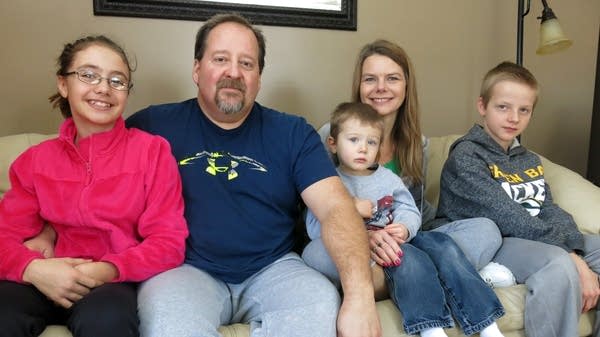New program teaches foster parents to treat opiate-addicted babies in home

John and Cindy Ness sit with three of their children, Tiena, Zack and Noah in their home south of Bemidji on Dec. 27, 2016. For the last 17 years, the Ness family has hosted dozens of foster children.
John Enger | MPR News
Go Deeper.
Create an account or log in to save stories.
Like this?
Thanks for liking this story! We have added it to a list of your favorite stories.


